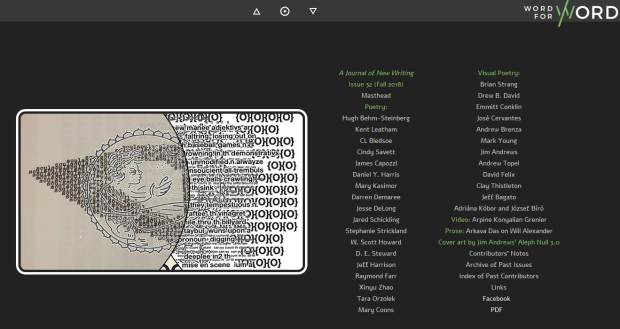After seeing some of my Gonch poems and images in Word for/Word journal #32, Keith Robert contacted me by Facebook with the news that “gonch” actually has a meaning in Canada! Keith writes, “‘gonch’ is a Canadian word for underwear (like tighty whiteys) it comes from the Ukrainian gatky.”
Sure enough, an Internet search for “gonch definition” immediately discovered the gonch wiktionary page, confirming this meaning and etymology. A linguistically inventive people, the Canadians also say “gotch, ginch, gitch, gonchies, gotchies, ginchies, or gitchies,” depending on which region you’re in. Other online slang dictionaries add that “gonch” often refers to threadbare undershorts.
Wiktionary helpfully supplies these usage notes for “Gonch”:
Used in British Columbia and Alberta. Gitch and gotch are variants heard east of Alberta. It is also acceptable to append -ies to any of these variants, especially when referring to the underwear of male children. The term is becoming more widespread in use as a result of the rise in popularity of Vancouver-based undergarment company GinchGonch. A gotch-pull or gonch-pull is another name for a wedgie.
Gonch-pull! I’m going to have to work that into the Gonch project somehow.
For me, “gonch” was jut a nonsense word I invented as a child. When I decided to base a poetic language from the phrase “all gonch,” I never dreamed it would have any meaning or connotation for anyone else. It was just supposed to be a Dadaistic piece of absurdity to make an oblique comment on the American regime of the 45th President and its habits of public discourse. With American English in ruins, a new language would one day arise to take its place. That language could be Gonch.
But just as the various meanings of “Dada” (“father,” “hobby horse, or “yes yes” depending on the language) added layers to the nonsense, I’m delighted to learn that “gonch” has some meaning far beyond anything I could have imagined. To make an absurd commentary on the Prez #45 era, a language based on “underwear”–especially crusty old underwear–seems even more appropriate.
In an effort to be thorough in the search for extradimensional Gonch meanings, I plugged the word into Google Translate and ran it through a wide range of the language options. Nothing came up. “Gonch” means “gonch” everywhere in the world. Except in Canadian English.

Now for a commercial message. Wiktionary refers to a Canada-based undergarment company called Ginch Gonch. Readers may be interested to know that this company still exists, and makes a wide variety of undergarments for men and women, including jockey shorts, long underwear, gogo panties, camis and more. These are issued with silly printed designs featuring monkeys, bananas, ambulance cars, and so on. The company’s website includes a photograph of Miley Cyrus wearing a Ginch Gonch sport bra on the street. The picture below is another clever marketing image, along with the phrase “Going Gananas!” Dadasopher’s everywhere, rejoice!

 Progress Report
Progress Report





 The Gonchlog involves cutting the letters of “Gonch” from various consumer magazines and pasting them onto accounting paper. The source, its date of publication, and volume number are noted. The intention is to draw out that key nonsense word from these commercial propaganda vehicles in order to find a way forward. Or something like that. I have completed over 350 of these to date.
The Gonchlog involves cutting the letters of “Gonch” from various consumer magazines and pasting them onto accounting paper. The source, its date of publication, and volume number are noted. The intention is to draw out that key nonsense word from these commercial propaganda vehicles in order to find a way forward. Or something like that. I have completed over 350 of these to date.










